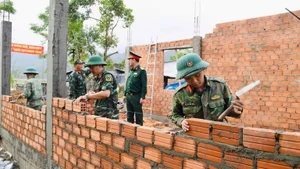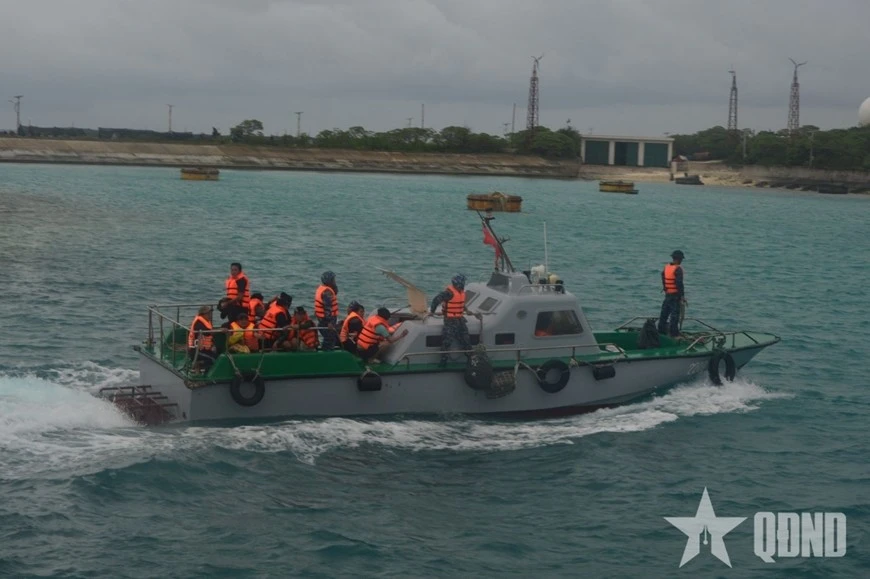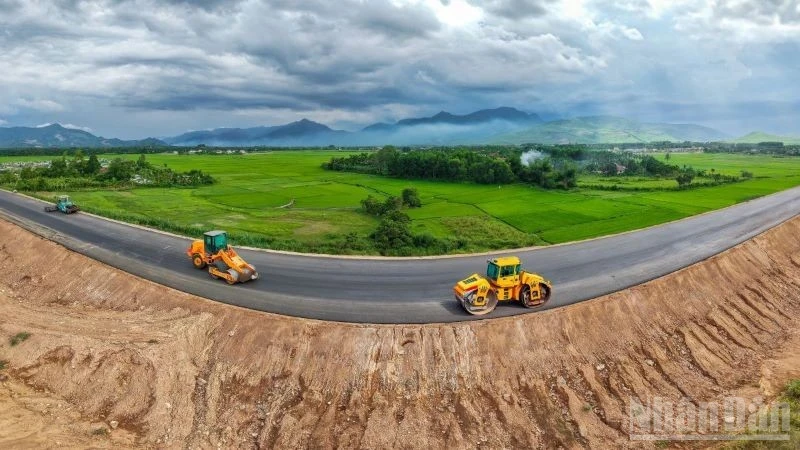Ahead of the typhoon’s landfall, residents of central provinces worked through the night to harvest the summer-autumn rice crop, secure their homes, and reinforce structures against heavy rain and strong winds. Local authorities have mobilised the entire political system to respond to the disaster, especially in the context of implementing the new two-tier local government model.
A particularly dangerous typhoon
Mai Van Khiem, Director of the National Centre for Hydro-Meteorological Forecasting, assessed Typhoon Kajiki as particularly unusual and dangerous, with a wide circulation, rapid movement, and the potential for all three types of hazards: typhoon winds, heavy rain, and flash floods and landslides. Its intensity upon impact may be equivalent to Typhoon Yagi last year, or even stronger than Typhoon Doksuri in 2017, which caused severe damage in Ha Tinh. Therefore, localities must quickly complete reinforcement of structures, secure crops, and evacuate residents before the night of August 24, and people should avoid going outdoors during high winds.
Forecasts indicate that Typhoon Kajiki will make landfall around midday on August 25. Provinces must implement measures to protect bridges, ports, coastal tourism activities, and strictly prevent people from staying on barges, fishing vessels, fish cages, and watchtowers when the typhoon hits. Currently, eight provinces from Ninh Binh to Quang Ngai have issued sea bans. Border Guard forces in these localities have counted and guided nearly 60,000 vessels with nearly 249,000 people to proactively avoid the typhoon.
Localities from Thanh Hoa to Hue have reviewed and implemented plans to evacuate people from dangerous areas to safe locations, with a projected evacuation of more than 90,000 households, nearly 325,600 people. The most pressing concern now is the dykes, which are only designed to withstand Category 9-10 storms, while Typhoon Kajiki is at Category 13-14, gusting to Category 17, posing a serious safety risk. According to the Department of Dike Management and Disaster Prevention, the coastal and rivergate dike system from Ninh Binh to Hue has 43 critical vulnerable points.
On the afternoon of August 24, Deputy Minister of Agriculture and Environment Nguyen Hoang Hiep inspected and directed preparations for Typhoon Kajiki in Thanh Hoa province. At the mooring area for fishermen in Sam Son Ward, all boats had been brought ashore, and smaller vessels had been moved inland for safety. He demanded that Thanh Hoa remain absolutely vigilant and fully implement the “four on-the-spot” measures to ensure the safety of people and property.
In Nghe An, with the support of armed forces, residents promptly completed reinforcement of homes and public works by late afternoon on August 24. Most coastal houses and shops in Cua Lo ward have been firmly secured.
According to Nguyen Trung Thanh, Deputy Director of the Maritime Administration, all ships in the managed seaport area had been moved out of Nghe An’s waters to avoid the typhoon. The long-anchored vessel EAGLE 01 had been refuelled and departed on the morning of August 24.
Lieutenant Colonel Tran Van The from the Border Guard Station of Cua Lo-Ben Thuy Port reported that by 12 noon on August 24, the Border Guard had called over 700 vessels with more than 4,400 workers ashore to safe anchorage; all of the province’s more than 2,900 fishing boats had avoided the danger zone. The provincial Border Guard has mobilised 1,500 officers and soldiers along with dozens of vehicles of various types, ready to respond to the typhoon; reinforced 1.5 km of sea dike in Tan Minh and Tan Mai Wards.
Mobilising forces to support people against typhoon
In recent days, authorities and residents of Dan Hai Commune (Ha Tinh Province) have closely monitored and continuously updated information on Typhoon Kajiki to proactively plan their response. Tran Quynh Thao, Chairman of the Commune People’s Committee, said the area has 18.3 km of Huu Lam and Hoi Thong dikes. The Hoi Thong dike section from K10+900 to K11+500 is eroded, with some parts collapsing 5-7 metres from the dike’s base, posing a safety risk.
Early on August 23, the locality mobilised three excavators, two trucks, and more than 400 people, including various forces, to use wire mesh and hundreds of sandbags and stones to reinforce and prevent further erosion. The commune also organised the evacuation of more than 700 households with nearly 1,300 people to safe shelters.
As of 5 p.m. on August 24, Ha Tinh had evacuated over 3,900 households (10,355 people) to safe locations with proper living arrangements.
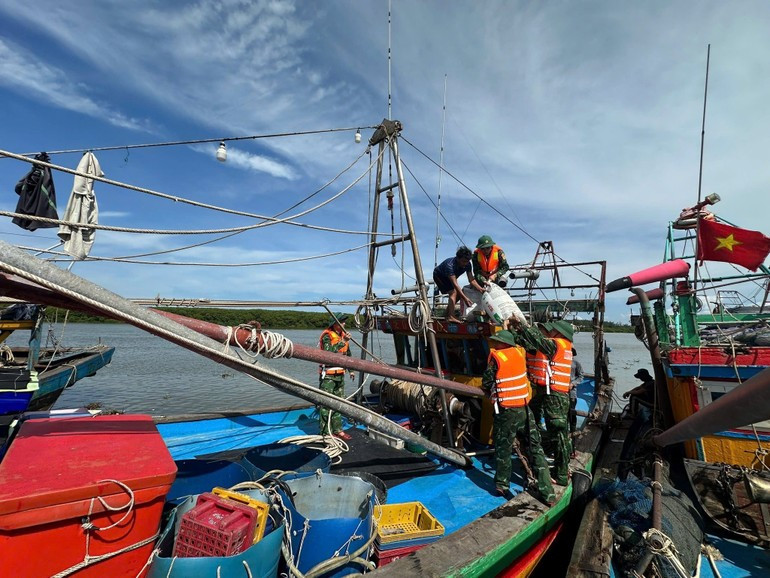
The province has also established a forward command post in Nghi Xuan commune, deploying more than 3,200 officers and soldiers and 6,900 militia to directly assist local authorities and residents.
According to Duong Ngoc Hoang, Chairman of the People’s Committee of Phuc Trach commune, the commune has nearly 550 hectares of pomelo cultivation, with 470 hectares ready for harvest. The authorities have sent multiple working groups to urge residents to protect pomelo and agarwood trees, brace and tie heavily laden branches, and clear drainage ditches. Farmers in Ha Tinh are also working at full capacity, racing against time to harvest the summer-autumn rice crop, with combined harvesters operating day and night to accelerate progress.
From the night of August 23 to the morning of August 24, farmers in Quang Tri province worked through the night to harvest rice ahead of Typhoon Kajiki’s landfall. Many farmers rushed to the fields under the night sky, with entire families mobilising manpower and machinery to gather the crop in a highly urgent atmosphere. The province has sown nearly 38,800 hectares; so far, farmers have only harvested about 2,500 hectares. Provincial authorities are directing localities to harvest all possible areas before the typhoon.
From 7 a.m. on August 24, Quang Tri Province banned all fishing activities and ordered all vessels to remain ashore. Le Ngoc Quang, Secretary of the Provincial Party Committee, said the Standing Board of the Provincial Party Committee had directed the mobilisation of the entire political system to respond to Typhoon Kajiki, particularly while implementing the new two-tier local government model. Functional forces must remain proactive and flexible in response, ready to evacuate residents from low-lying areas, coastal zones, and river mouths to safe places.
On the evening of August 24, at the Government’s forward command post at Military Region 4 Command, Prime Minister Pham Minh Chinh directed the response to Typhoon Kajiki. At the meeting, Nguyen Duc Trung, Secretary of the Nghe An Provincial Party Committee, reported that the province had planned to evacuate residents from 10 coastal communes, totalling more than 10,000 households, to safe shelters, ensuring essential supplies and food for them during their stay. Directing the typhoon response, the Prime Minister particularly emphasised the spirit of “prevention over response”, calling for the highest level of preparedness to protect lives and readiness to activate effective response plans.


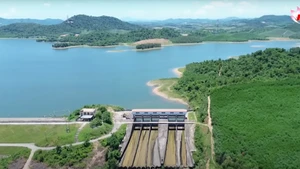





![[In Pictures] Nhan Dan Newspaper and Coteccons launch the Building Tet 2026 Programme](https://en-cdn.nhandan.vn/images/5992a12dd6e78b9bfb434962ff18307331f51c4c3a3e5fcfcd42f0234766d9c45840b0c6e06f3d50c1b8ba0f0abda1a6b665eff40edce9ec48a5692486f5a3ef/201225-xay-12.jpg.webp)
